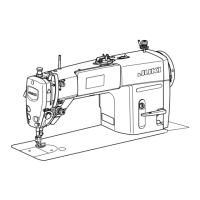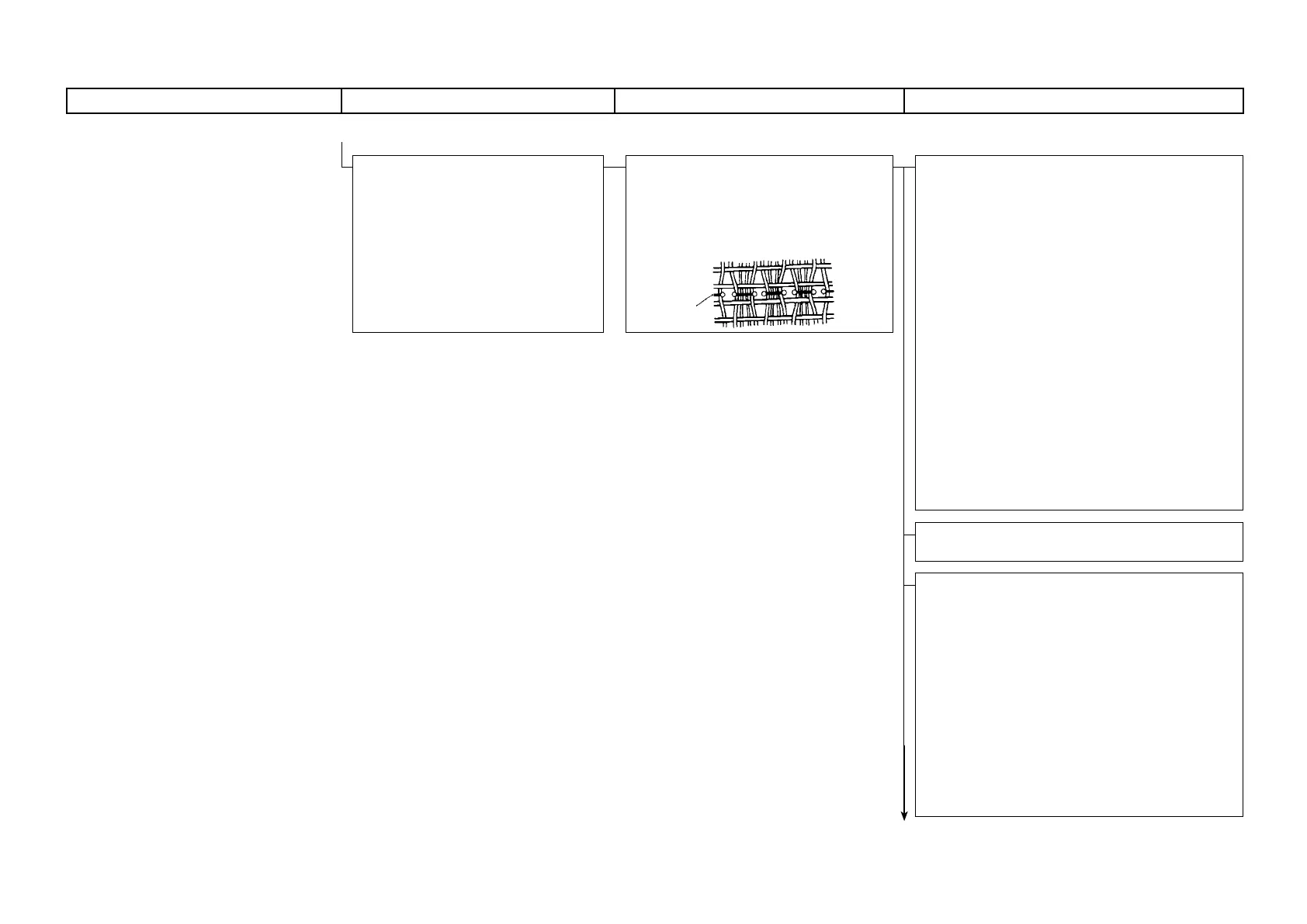– 165 –
Trouble Cause (1) Cause (2) Check and corrective measures
From the previous page
1-6) Occurrence of puckering by
tightening a thread
6-A) The course-woven and
close-woven stitches come to
occur because weaving yarns
of clothes are gathered with
stitches
The needle thread is made easy to adjust
slightly to the low tension by using a weak
spring for a thread take-up spring and a thread
tension spring.
○ Thread take-up spring
Part No. B3128-012-000 φ0.6mm (Standard)
Part No. D3128-555-D00 φ0.5mm
(For light-weight materials)
Part No. B3128-027-000 φ0.4mm
(For embroideries)
○ Thread tension springs
Part No. B3129-012-A00 φ1.0mm (Standard)
Part No. D3129-555-D00 φ0.9mm
(For light-weight materials)
(1)Part No. B3121-352-000 φ0.8mm
(For ultra light-weight materials)
(2)
Part No. B2017-372-000 φ0.6mm (Weaker springs)
Tension indicated for the lower limit of adjustment
(1) Some 20 grams for Tetoron thread (No. 80)
(1) Some 12 grams for Tetoron thread (No. 80)
Use a lightweight bobbin.
Part No. 229-64001 (Anodized aluminum)
Use the bobbin case that is easy to adjust
even when the tension is low.
(1) Bobbin case for sewing ultra light-weight materials
→
Part No. 111-05459
(The thickness of the bobbin tension adjust-
ing spring (popularly called: a brake shoe pin)
is 0.05 mm thinner than the standard one.)
(2) Bobbin case without an idling prevention spring
→ Part No. B1837-012-0A0
It can be adjusted to the low tension be-
cause of no idling prevention spring.
* It is unsuitable for high-speed sewing because
the idle running of a bobbin is easy to occur.
To the next page
Sewing
thread

